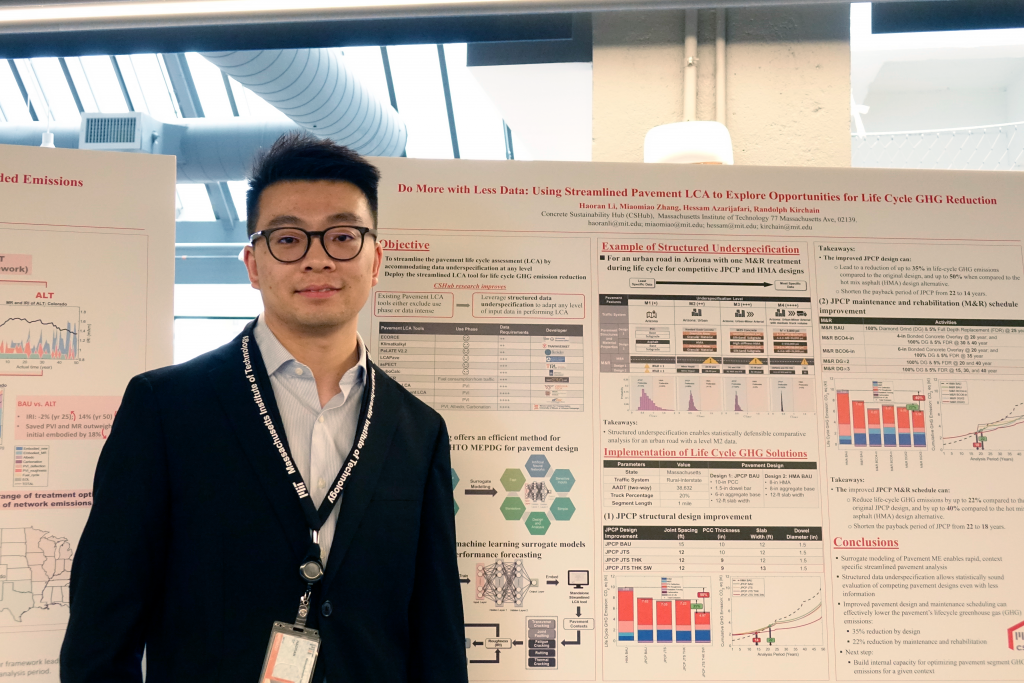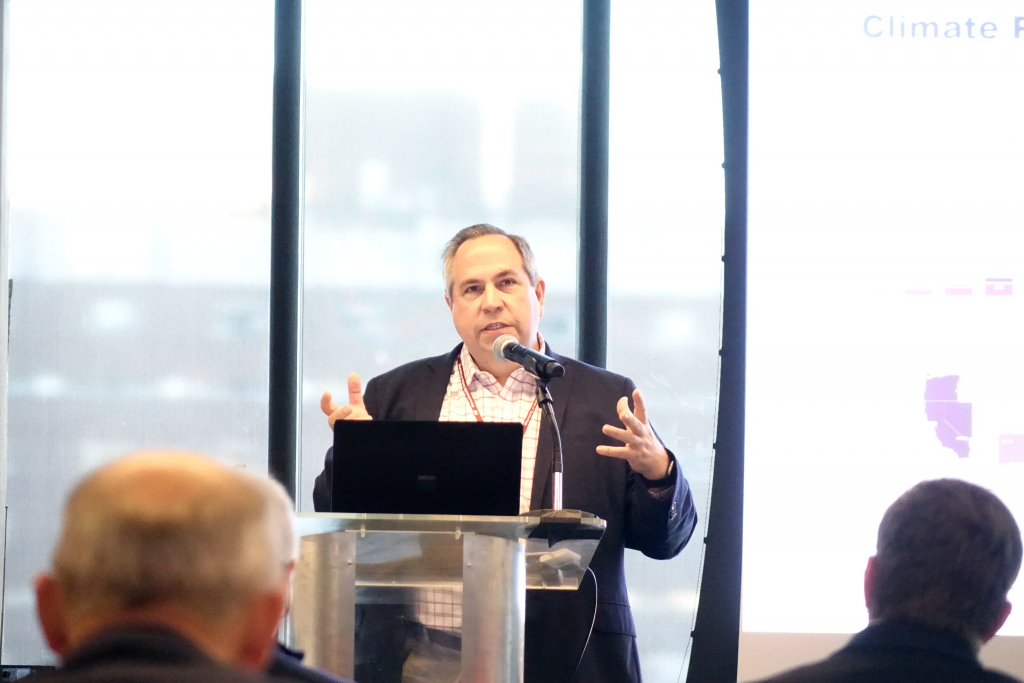Thank you to everyone who attended our presentations at ACI. We had eight presentations covering diverse topics. We are looking forward to the next Concrete Convention in New Orleans! Please find the list of presentations below:
i. Randolph Kirchain, “Incorporating Climate Vulnerability into the Study of the Embodied Carbon of Buildings”
ii. Marcin Hajduczek, “Chemically induced pre-sure carbonation: A novel system for carbon sequestration in cementitious materials”
iii. Ipek Bensu Manav, “Exploring Opportunities for Building Life Cycle Assessment (LCA) to Inform Cement Scope 1-3 Greenhouse Gas (GHG) Reporting” (Poster)
iv. Ariel Attias, “Statistical Physics for Quasi-Brittle Fracture”
v. Elizabeth Moore and Beth Unger, Ph.D, “Transforming the Role of the Concrete Delivery Professional: A Study on Innovative Solutions for the Ready-Mix Concrete Industry”
vi. Haoran Li, Ph.D, “Development of a streamlined framework for probabilistic and comparative life cycle assessment (LCA) of concrete pavements”
vii. Damian Stefaniuk, “Carbon-cement supercapacitors: A disruptive technology for renewable energy storage”
viii. Hessam AzariJafari, “Concrete Material Transparency: How Buy Clean Initiatives are Transforming Project Requirements”





















